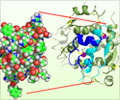Scientists have analyzed how fat tissue from different body parts may lead to diabetes onset in men and women.

Although the disease is common, there is still much research left to be done to fully understand it. For instance, while diabetes is linked to obesity, researchers still do not know the exact reasons why obesity causes diabetes.
They reviewed almost 200 hundred scientific papers looking for a deeper understanding of how fat operates at the surface and tissue level, and the mechanisms by which that tissue contributes to diabetes onset.
“There are many different theories about how diabetes develops, and the one that we explore posits that different regions of fat tissue contributes to disease risk differently,” says Kerri Delaney, a PhD candidate at Concordia’s PERFORM Centre and the paper’s lead author. “So the big question is, how do the different depots uniquely contribute to its development, and is this contribution different in men and women?”
From surface to cell level
Men and women store fat in different places. Diabetes, like many other diseases, is closely associated with abdominal fat. Women tend to store that fat just under the skin. This is known as subcutaneous fat. In men, abdominal fat is stored around the organs. This is visceral fat.
Advertisement
Working from the hypothesis that diabetes risk is driven by expansions of visceral fat in men and of subcutaneous fat in women, the researchers then looked through the papers to see what was happening in the cell-level microenvironments.
Advertisement
Delaney and Santosa hope that by identifying how diabetes risks are different in men and women, clinical approaches to treatment of the disease can be better defined between the sexes.
“Currently, the treatment of diabetes is similar for men and women,” says Santosa, an associate professor in the department of Health, Kinesiology and Applied Physiology. “If we understood the differences between them better, we could consider these mechanisms in recommending treatments to men and women based on how diabetes medications work.”
Source-Eurekalert















